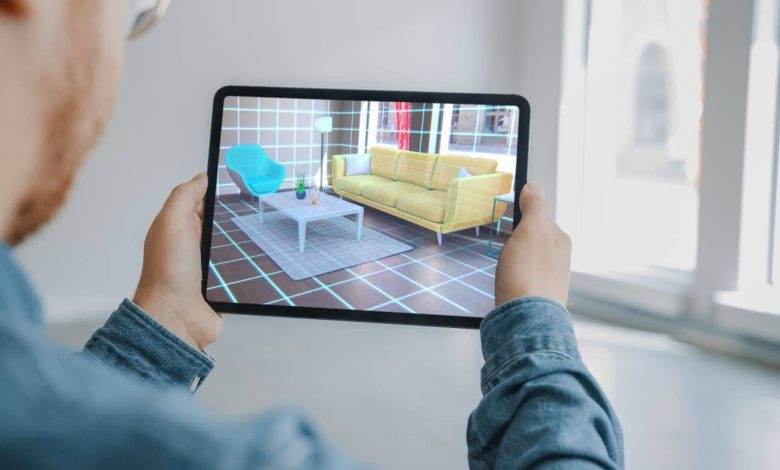Augmented Reality: Enhancing the Entertainment Experience

Augmented Reality (AR) has increasingly become a game-changer in the entertainment industry, offering experiences that blur the line between the real world and digital environments. By seamlessly integrating computer-generated elements into the physical world, AR enhances how we interact with movies, television shows, video games, live performances, and more. As technology continues to evolve, the potential for AR to reshape the entertainment landscape is becoming more evident. Here’s an exploration of how AR is enhancing entertainment experiences across various platforms and mediums.
1. Immersive Gaming Experiences
One of the most significant ways AR is revolutionizing entertainment is through its impact on gaming. AR gaming takes the traditional gaming experience beyond the screen by incorporating real-world environments into the gameplay. This interaction between the physical and virtual worlds creates an immersive experience that has captivated millions of gamers worldwide.
For example, Pokémon GO is one of the most successful examples of AR in gaming. The app encourages players to explore their surroundings while capturing virtual creatures that appear in real-world locations. By combining digital content with physical spaces, AR games provide a level of interactivity and immersion that traditional gaming consoles cannot replicate.
In addition to mobile games, AR is also making its way into console gaming. Devices like the Microsoft HoloLens offer players a chance to engage in AR-based games that interact with their environment in real time, enabling more dynamic and interactive gameplay. This has opened the door for more innovative game designs that blend reality with digital elements in exciting ways.
2. Enhanced Live Events and Concerts
AR is also being integrated into live events and concerts, bringing a new dimension to audience engagement. With the use of AR glasses or mobile apps, event-goers can view augmented visuals during live performances, adding a layer of spectacle to the event that enhances the overall atmosphere.
For instance, concerts now feature holographic performances where artists appear virtually on stage, interacting with the live performers. These visuals can range from fantastical animated creatures to futuristic landscapes, creating an entirely new form of entertainment that blurs the boundaries between reality and digital art. AR can even enable fans to engage with live shows in real-time by providing additional content such as lyrics, behind-the-scenes footage, or 3D visuals directly on their devices.
In sports events, AR is used to enhance the viewing experience by providing real-time statistics, player bios, and other interactive data overlaid onto the screen. This allows fans to engage with the game in a more informative and personalized manner.
3. Interactive Movies and TV Shows
The entertainment world has seen a shift in how content is consumed, and AR is playing a key role in this transformation. Movies and television shows have begun to incorporate AR elements that allow viewers to engage with the content in new ways.
For example, some movies are using AR to create an interactive experience for their audience. Through AR-enabled apps or devices, viewers can unlock additional scenes, explore hidden content, or even interact with characters from the movie. This kind of interaction can transform passive viewers into active participants, deepening their connection to the story and the characters within it.
Shows like Black Mirror have explored the potential of interactive entertainment, with episodes like “Bandersnatch” allowing viewers to make choices that influence the plot. While this is not strictly AR, it represents the broader trend of content that allows viewers to step beyond the traditional viewing experience and engage with the material on a deeper level.
4. Virtual Tourism and Museums
Another exciting application of AR in entertainment is in the realm of virtual tourism and museums. AR allows people to experience cultural landmarks, historical sites, and exhibits in an entirely new way. Through AR apps, users can explore ancient ruins, famous artworks, or even distant planets as if they were physically present, all from the comfort of their homes.
Museums around the world are increasingly incorporating AR to enhance the visitor experience. Through AR glasses or smartphone apps, museum-goers can interact with exhibits, access supplementary information, or see historical events come to life in 3D. For example, the Louvre in Paris has employed AR to provide detailed insights about the history of famous artworks, while the British Museum in London has used AR to bring ancient artifacts to life, allowing visitors to see reconstructions and animations of how these objects were used in their original context.
Virtual tourism also benefits from AR, enabling people to visit places they might never physically travel to. AR can make virtual tours of historical sites, national parks, and even otherworldly locations more engaging by overlaying informational content, historical details, and interactive elements.
5. Retail and Brand Integration in Entertainment
Brands are increasingly turning to AR to promote their products in the entertainment sector, blending marketing with interactive experiences. By integrating AR with retail, entertainment, and consumer products, companies can create unique and memorable experiences for audiences.
In the film and television industry, for example, AR has been used to allow fans to interact with their favorite franchises. Augmented reality apps often allow users to bring characters to life in their living rooms, create customized posters, or explore behind-the-scenes content. Fans of popular films like Star Wars or Marvel can use AR to unlock interactive content related to the films, providing a richer and more immersive experience.
Similarly, video game developers have been collaborating with retail brands to offer AR experiences that tie into new game releases. Players can visit certain stores, scan posters, or use AR apps to discover in-game rewards or promotional items linked to real-world locations, making the gaming experience even more engaging.
6. AR in Social Media and Content Creation
Social media platforms like Instagram, Snapchat, and Facebook have embraced AR, allowing users to create and share interactive content. Filters and effects that transform users’ faces or surroundings are just the beginning. These platforms are increasingly offering tools that let users enhance their posts and stories with virtual elements that interact with their real-world environment.
For example, Snapchat’s AR lenses allow users to add virtual characters, objects, and animations to their videos and photos. These lenses have become a central part of social media content, with brands and content creators using them to engage their audiences in creative ways. In the future, we can expect even more advanced AR features that will allow for highly personalized and interactive content creation.
7. The Future of AR in Entertainment
The future of AR in entertainment is incredibly promising, with advances in technology continuing to drive innovation. As AR devices become more sophisticated, the experiences they offer will only get more immersive. We may soon see AR glasses that offer hands-free interaction, allowing users to engage with content in a completely seamless manner, without the need for phones or external screens.
Additionally, as the entertainment industry integrates AR more deeply into its offerings, there will likely be more opportunities for collaboration between content creators, tech developers, and brands. The blending of reality and digital elements in AR has the potential to transform not only how we engage with entertainment but also how we experience the world around us.






